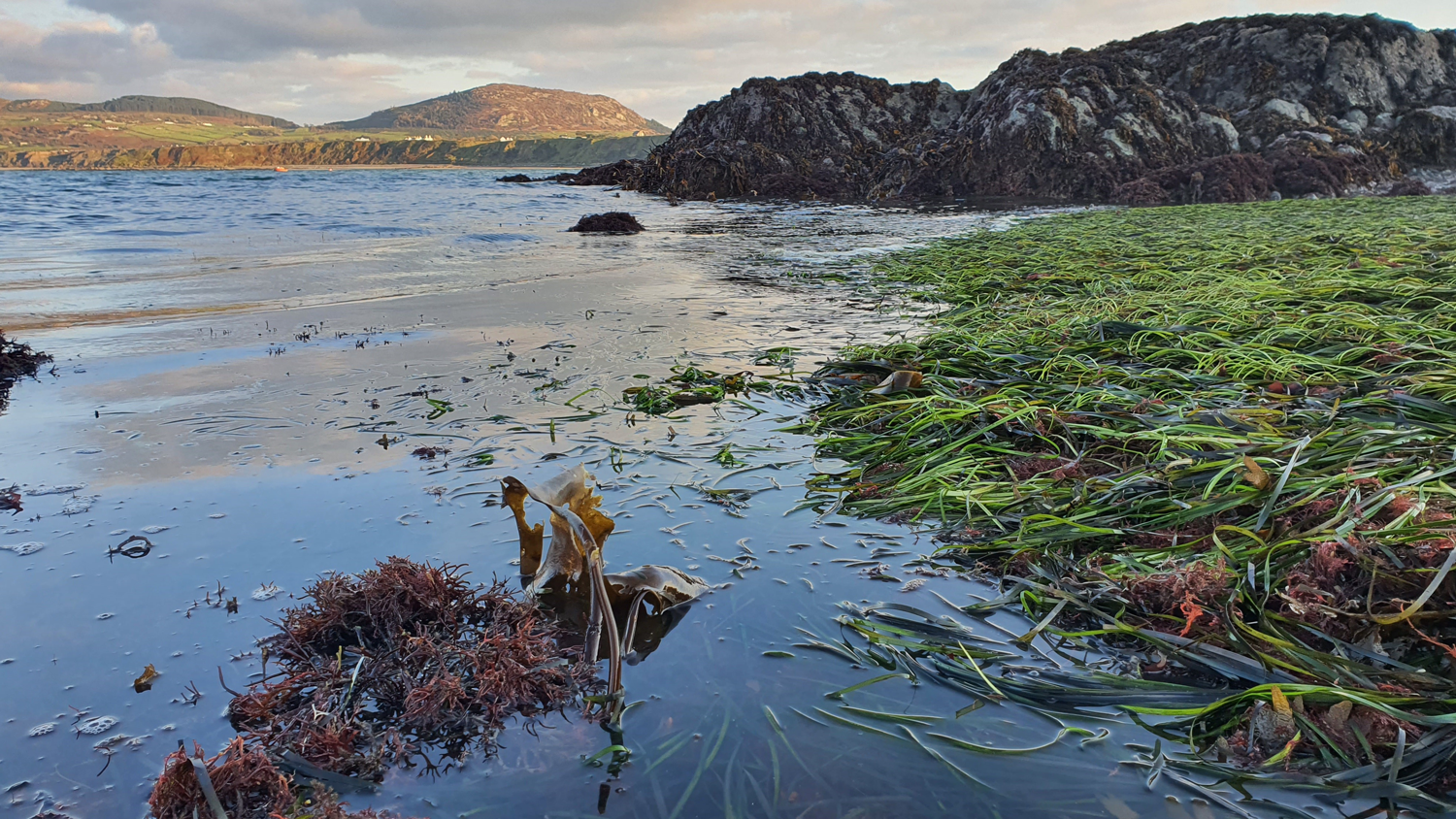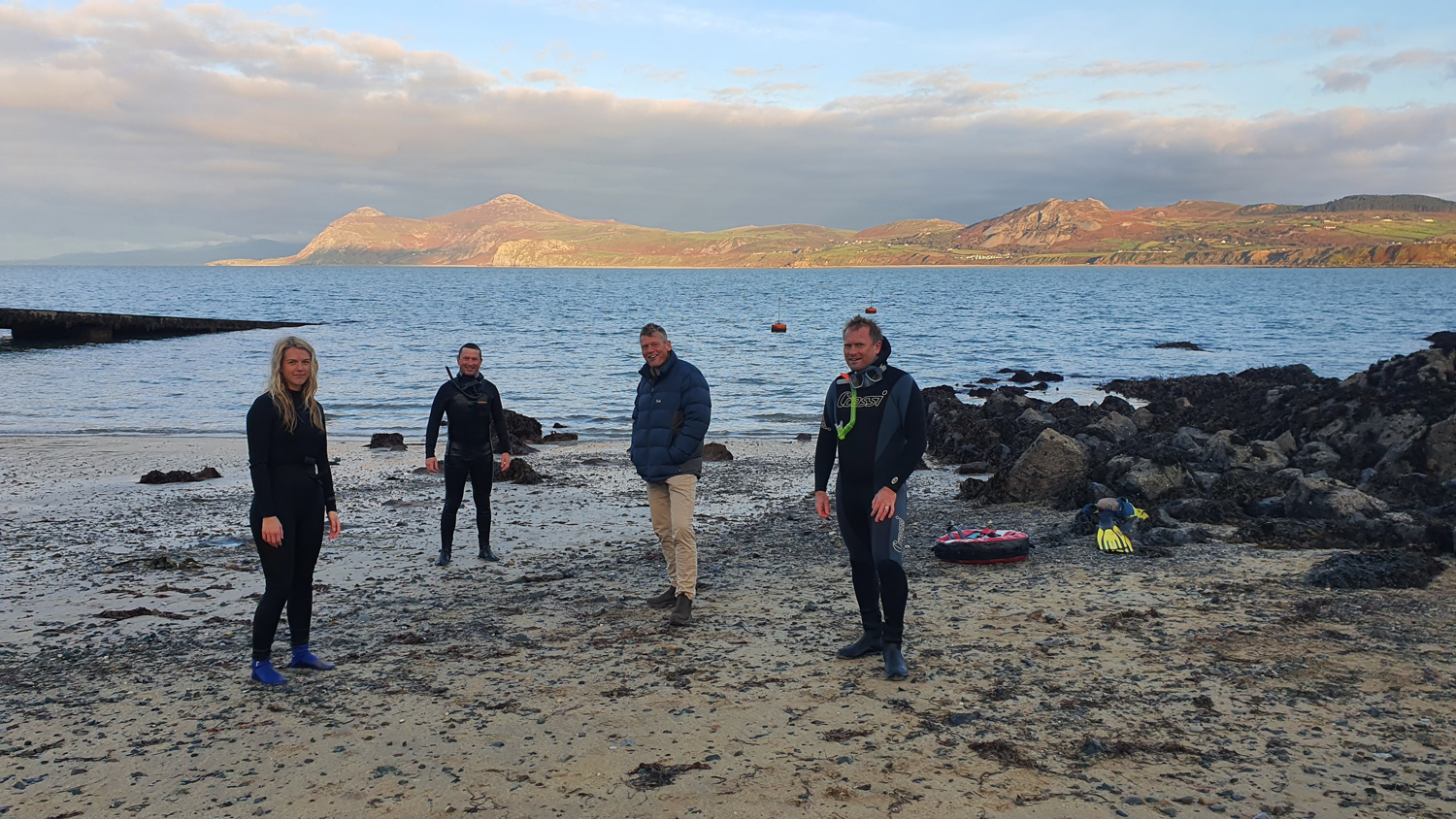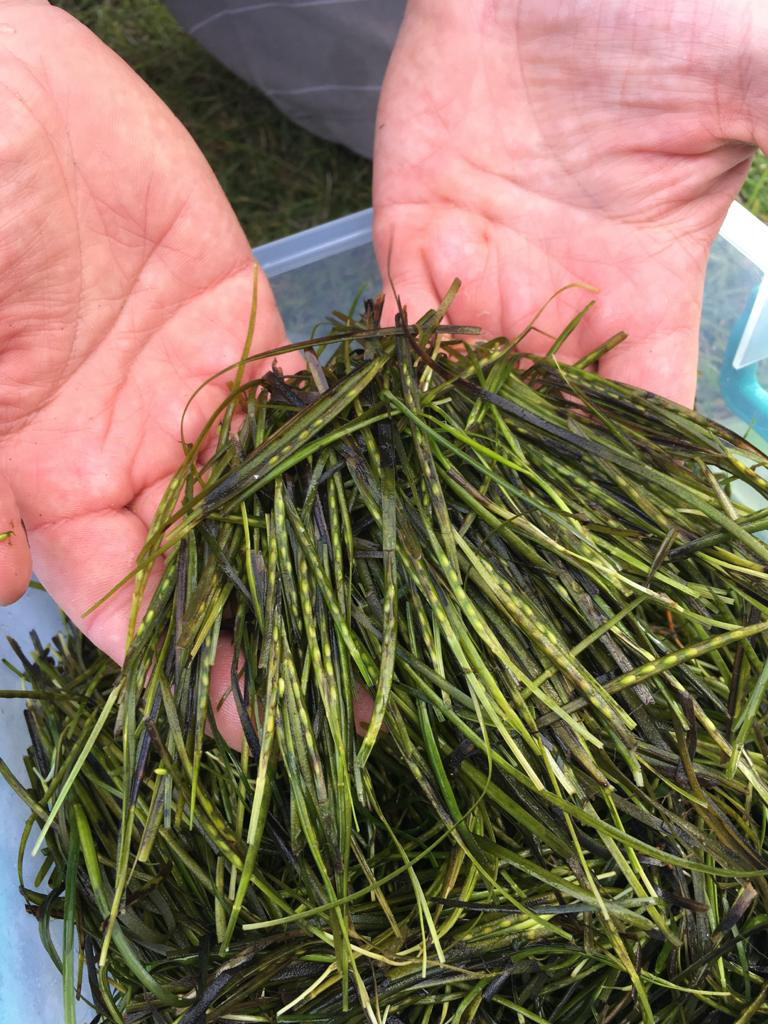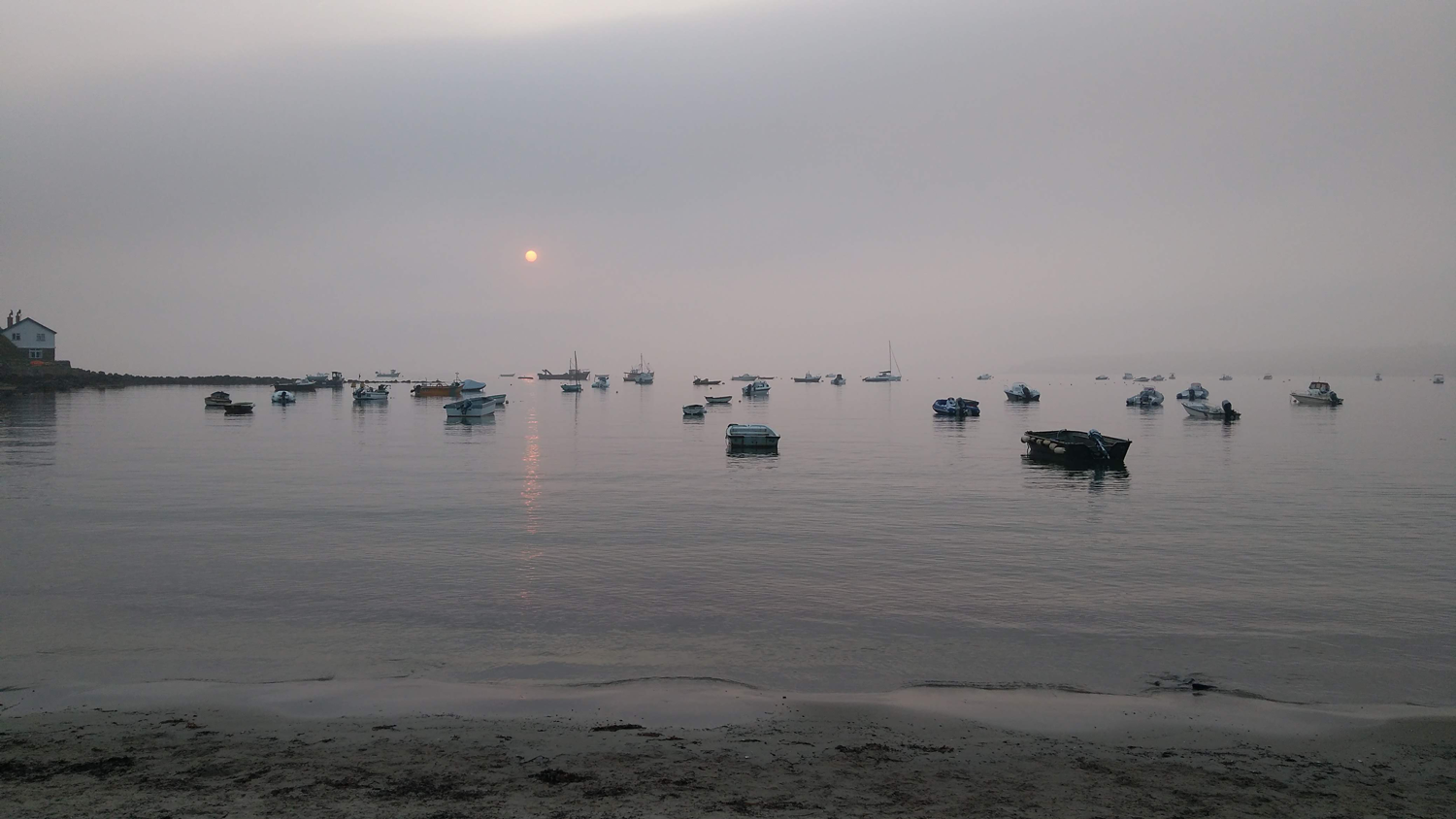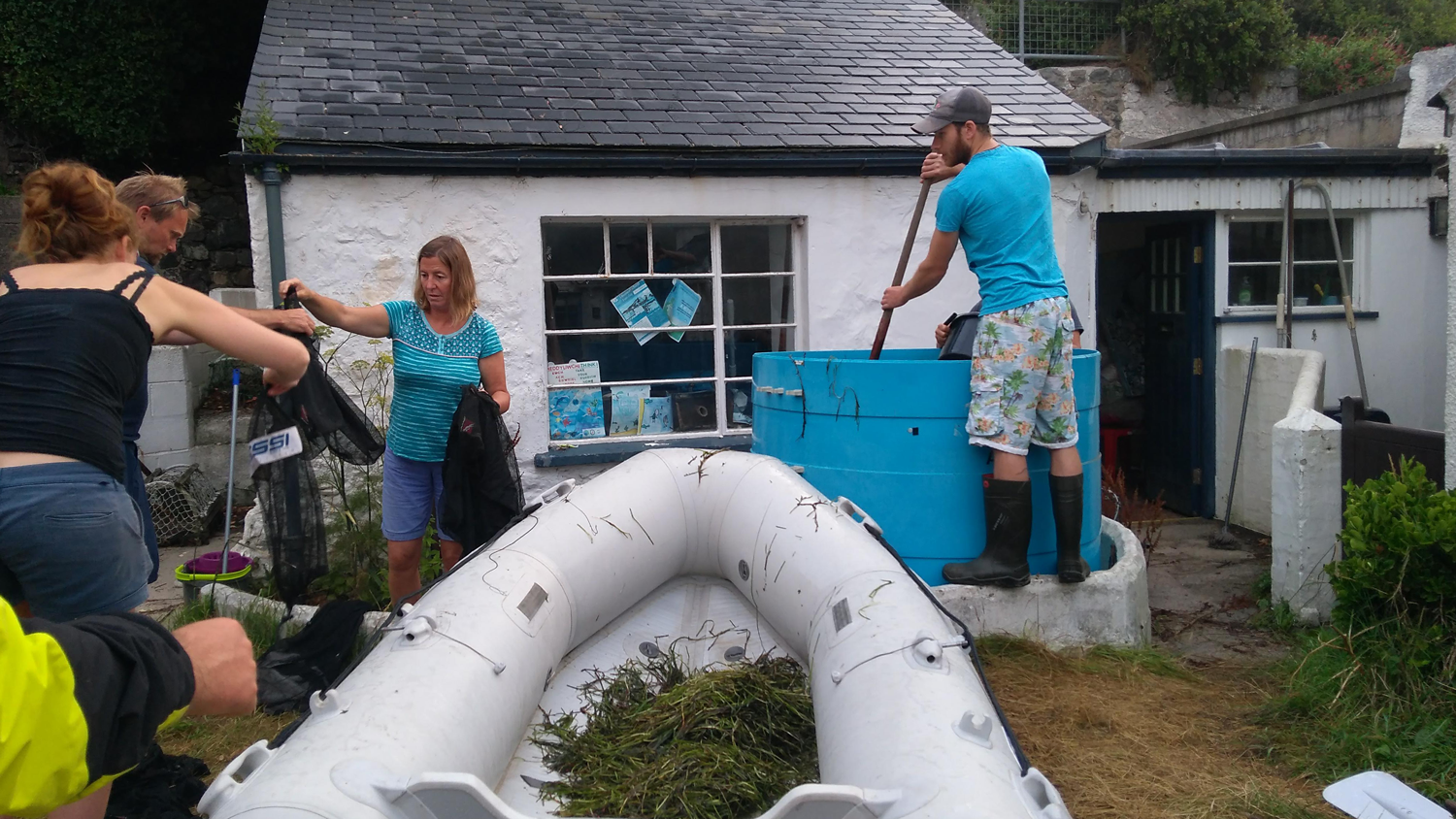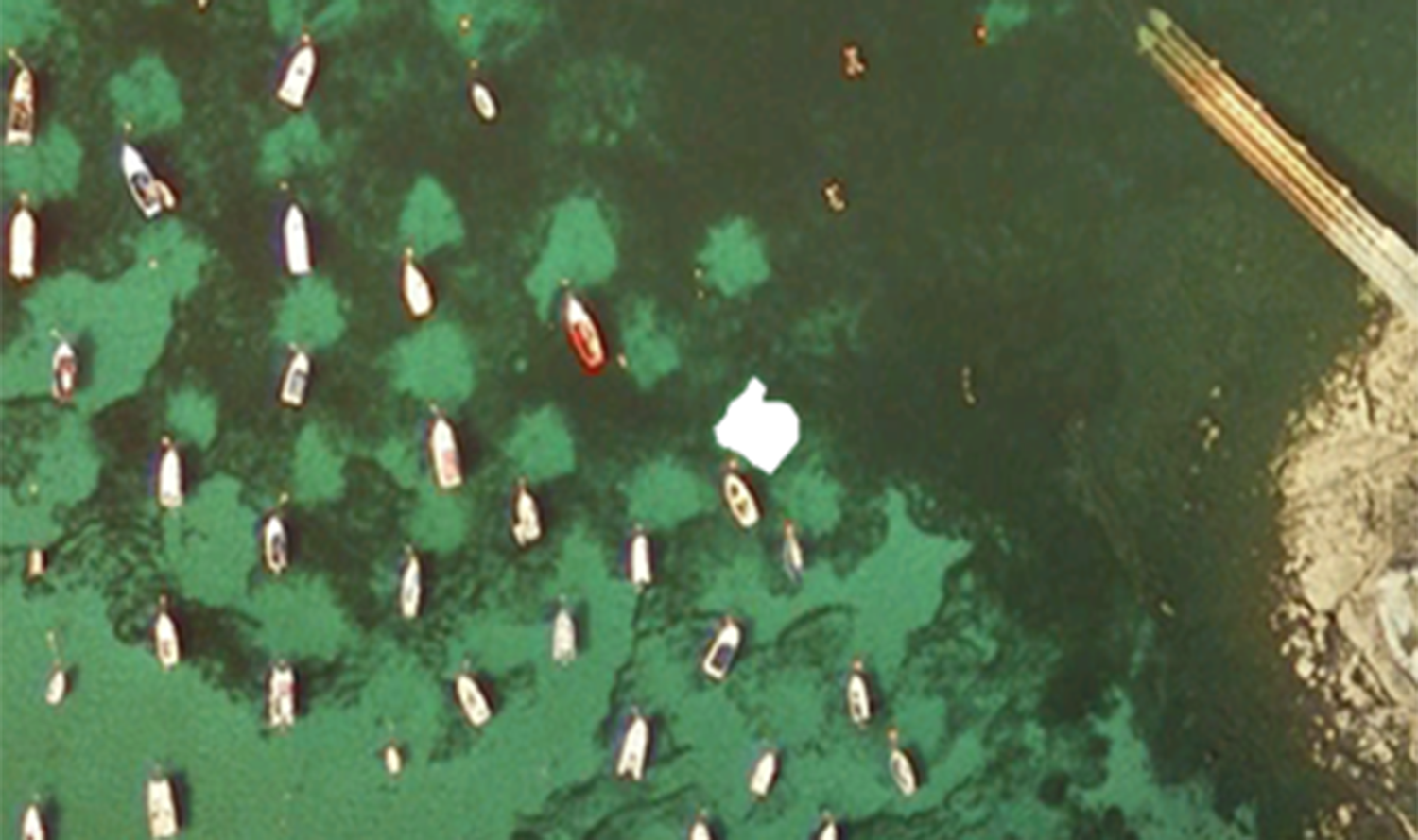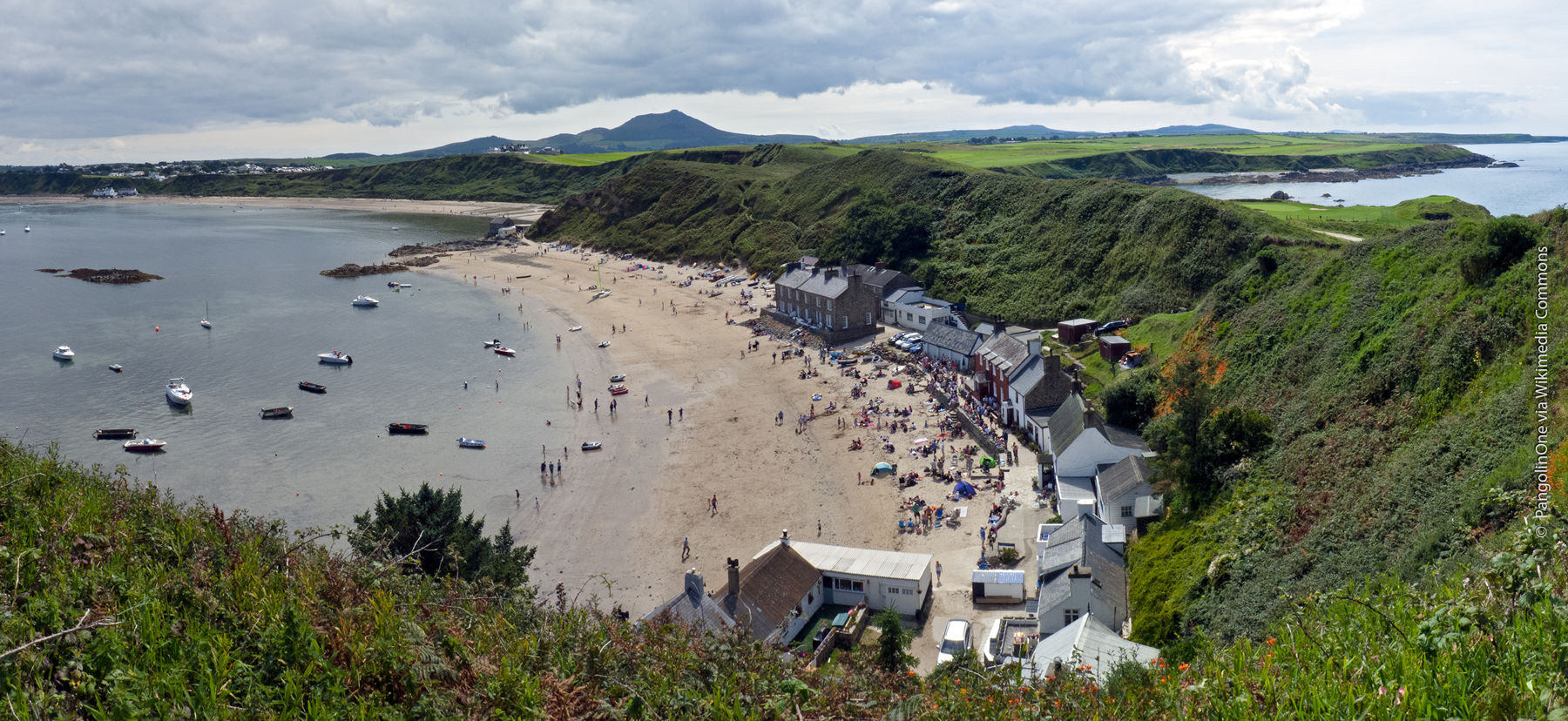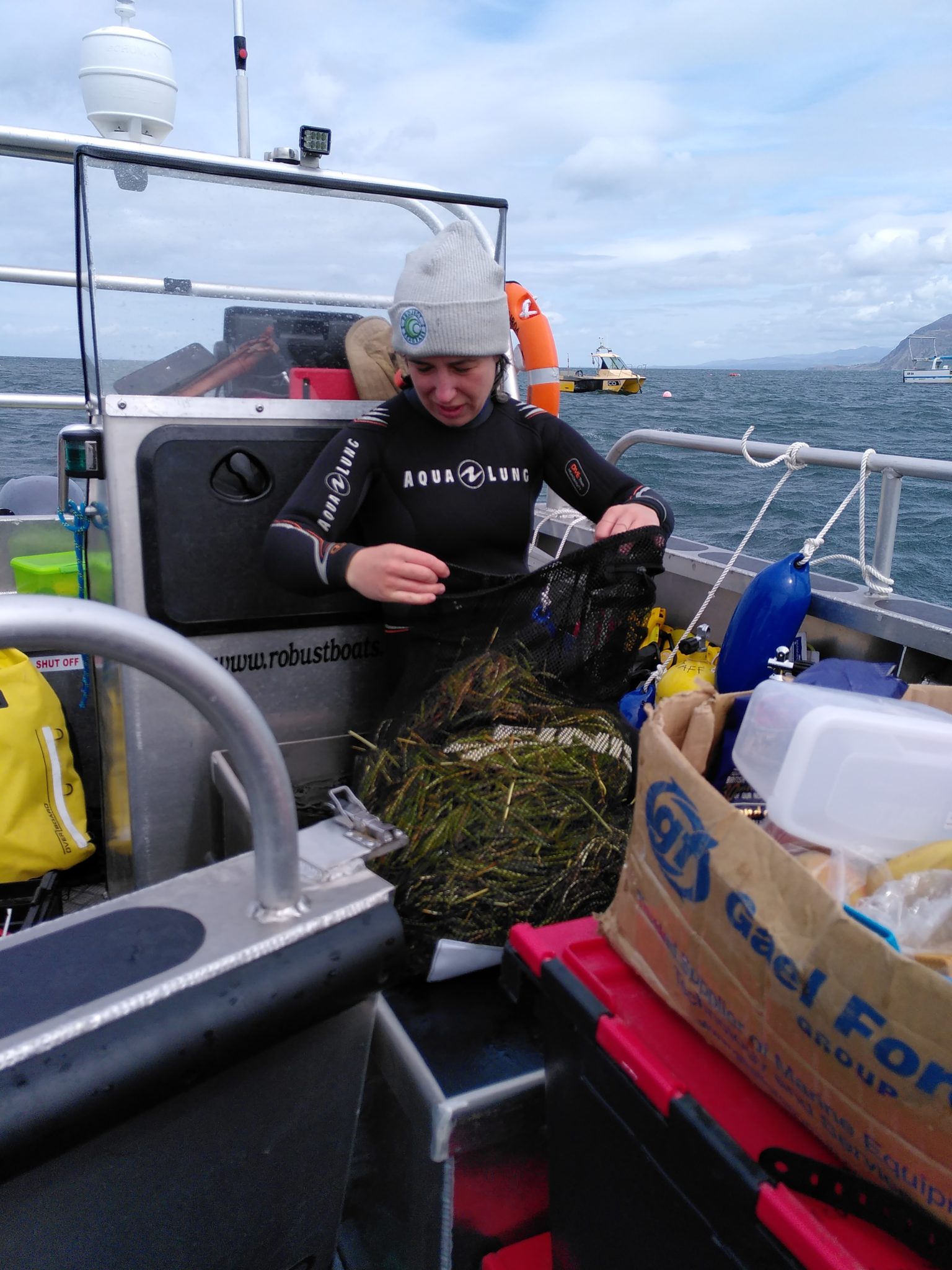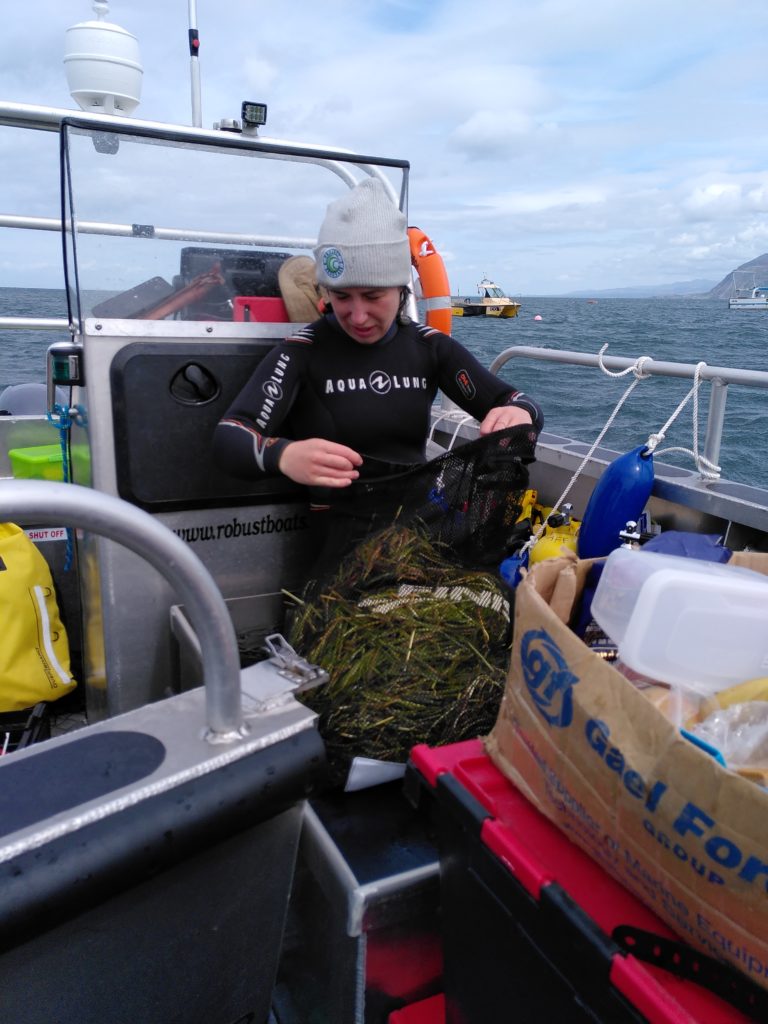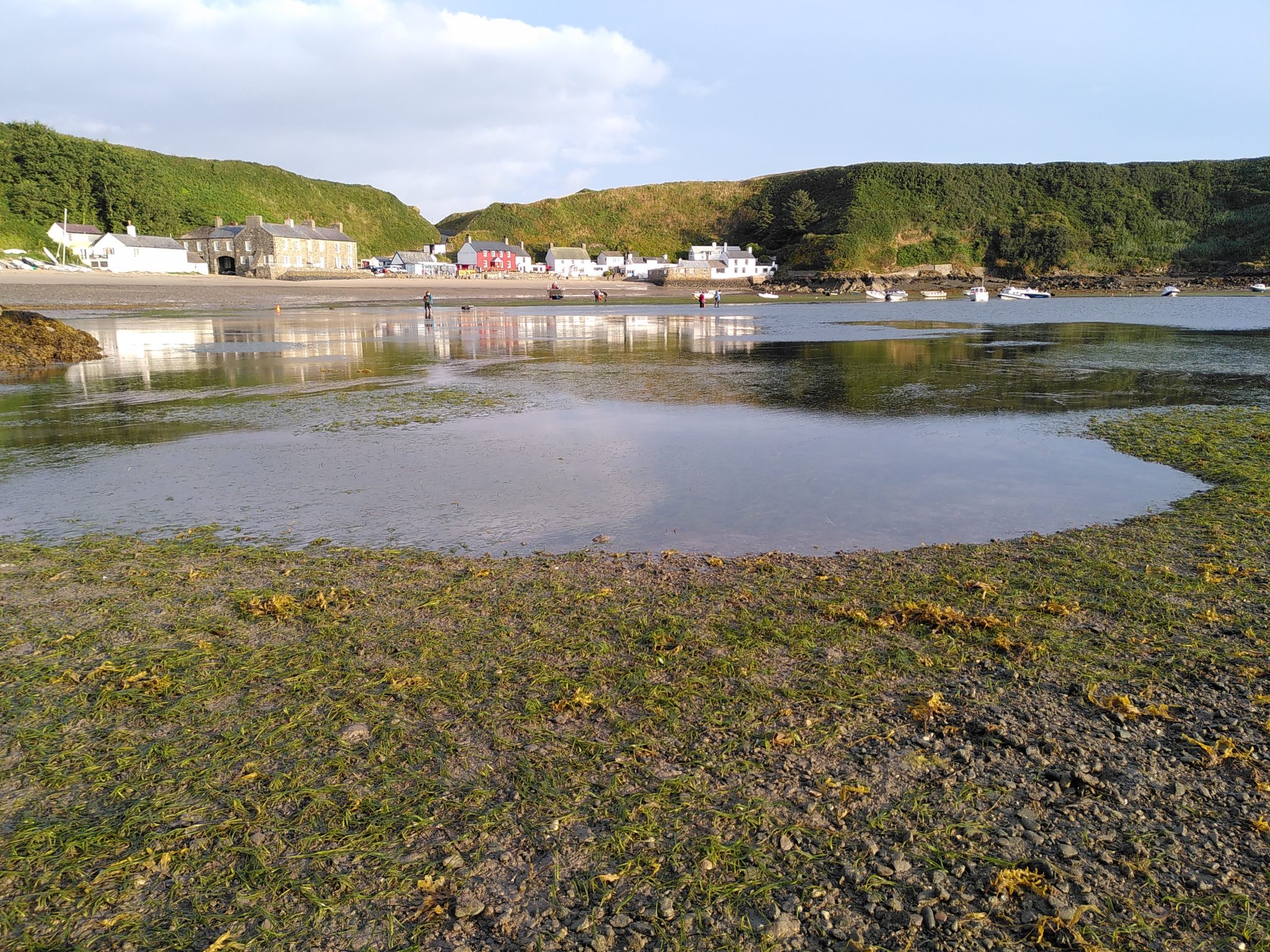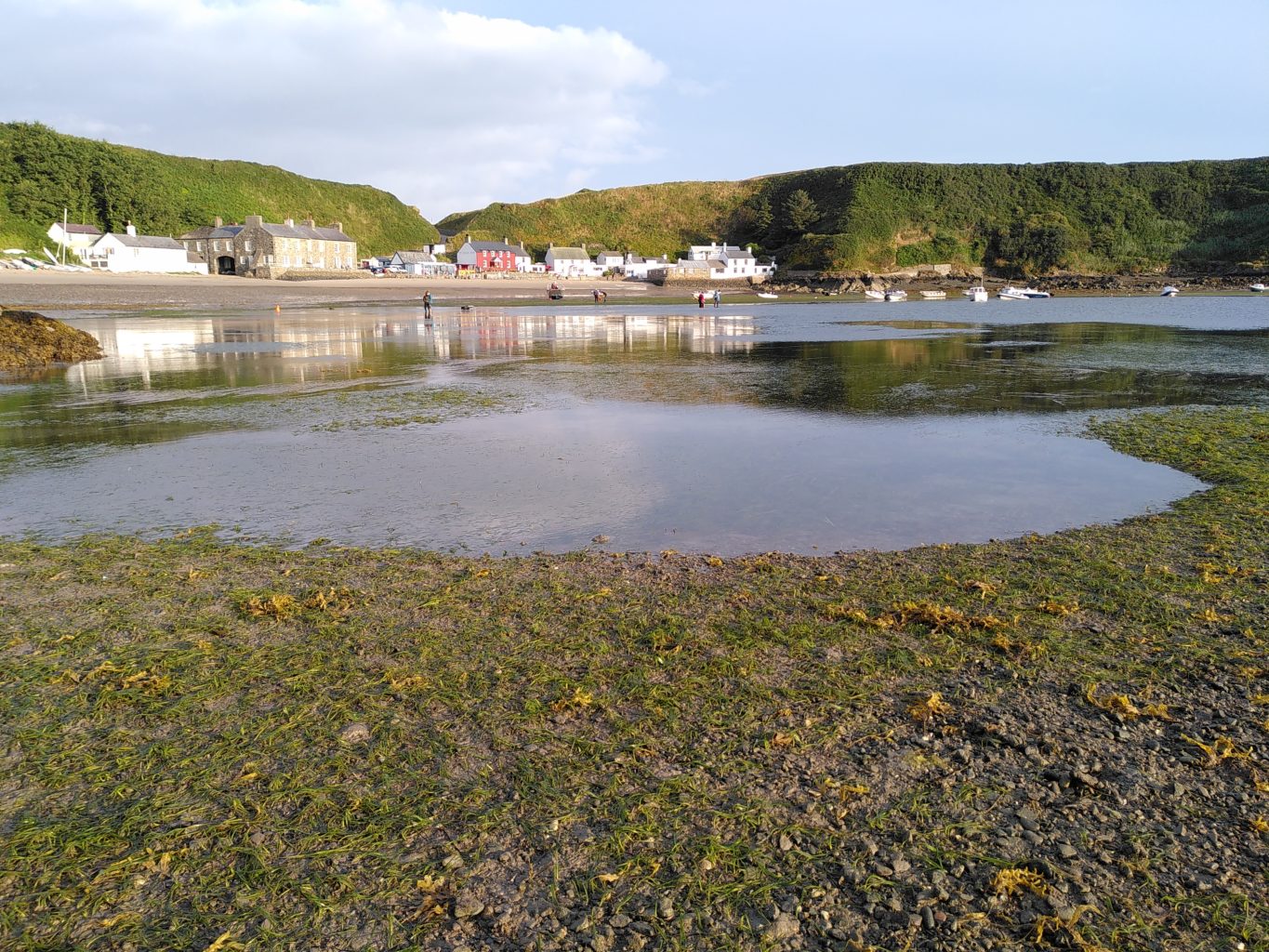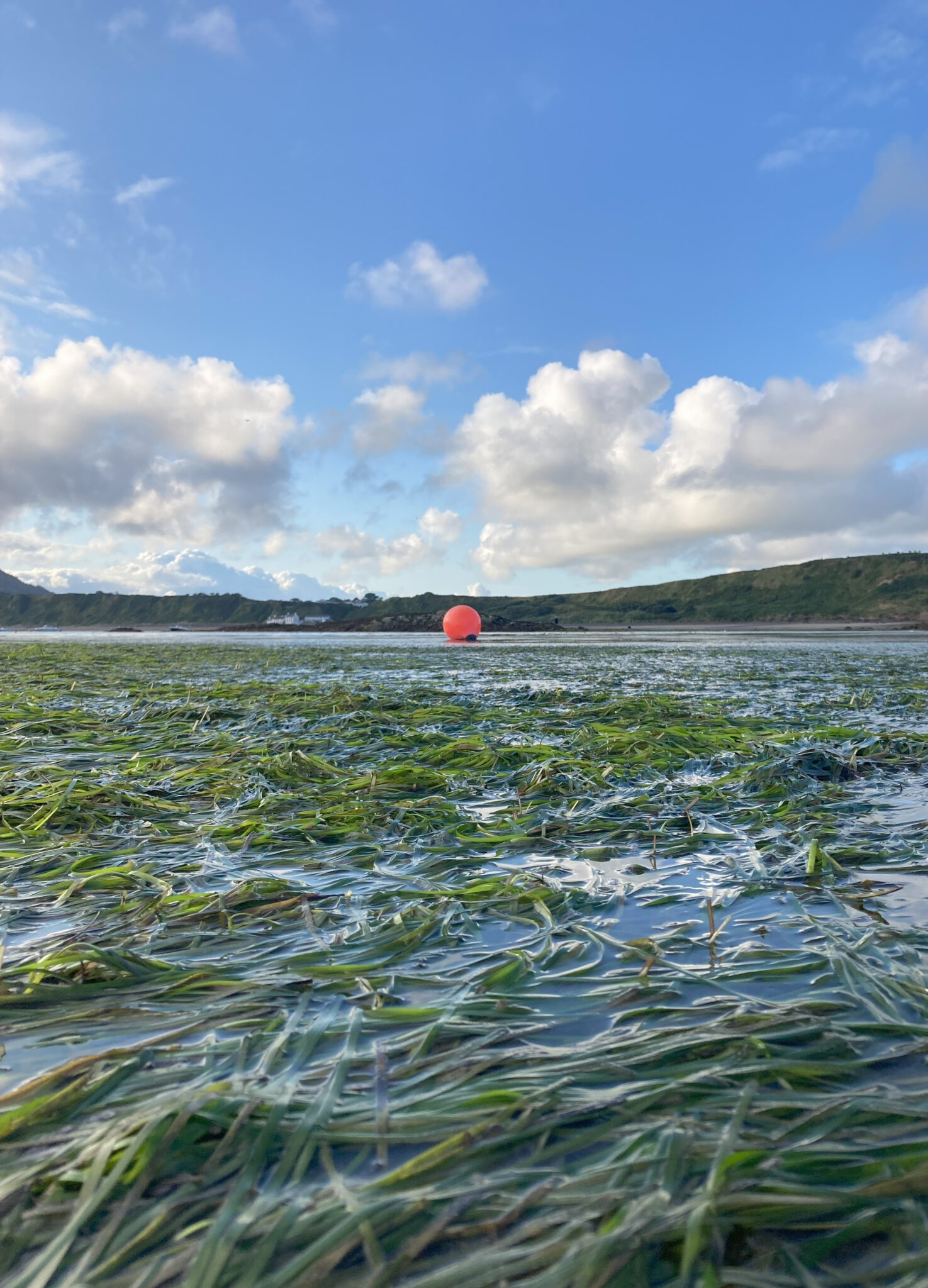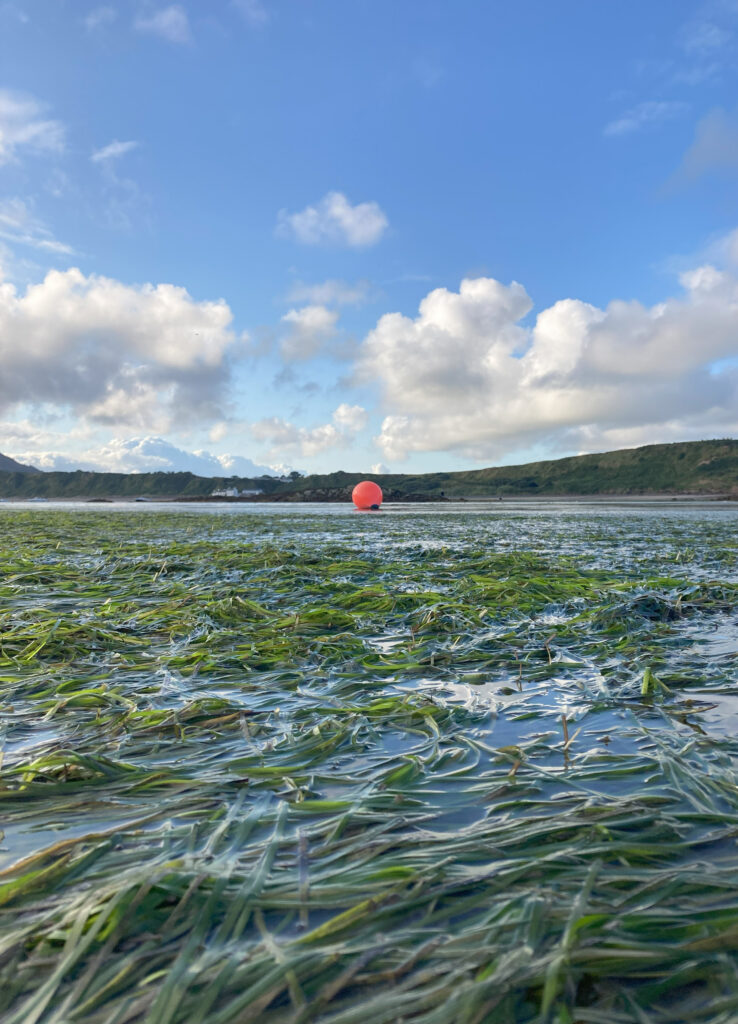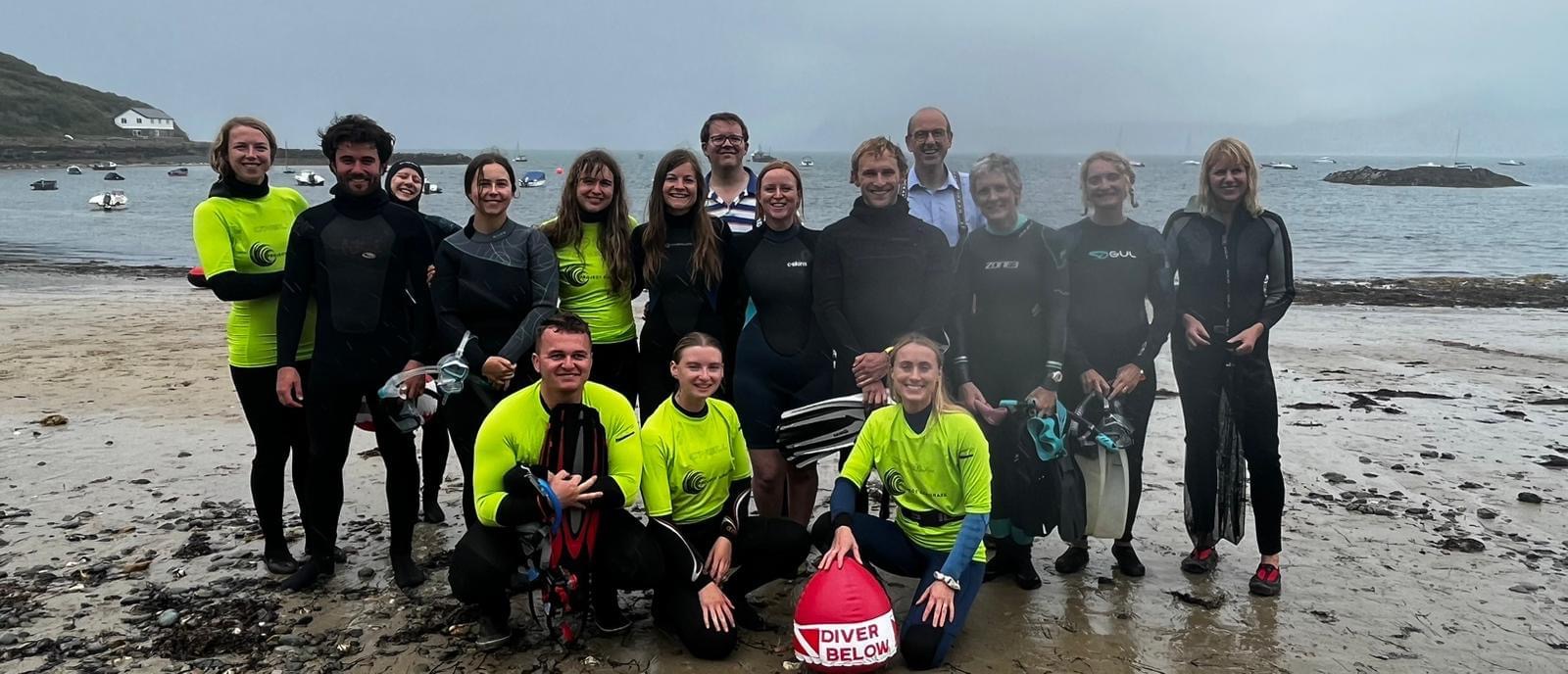In the shallow waters of the Irish Sea, off the northern Welsh coast, is one of the U.K.’s most spectacular seagrass meadows. These productive, expansive meadows provide many benefits, including:
- Wildlife food and shelter
- Reduction of storm damage and erosion
- Better water quality
- Food and economic security for fishing communities
- Carbon trapping that exceeds rainforests, acre for acre
Much of the seagrass in Wales, however, has been lost. It is critical to save what remains, both for the benefits it provides and as a source of seeds for restoration efforts. In sites where only patches are left, natural regeneration is difficult or impossible, and active restoration is necessary.
Near the town of Porthdinllaen, chains used to moor boats in the harbor have literally scarred the seagrass meadows. As the moored boats bob in the water, the chains drag on the bottom, tearing up seagrass plants. The denuded patches are visible on Google Earth.
This project, Seacology’s first in the U.K., will restore at least ten separate scarred areas, totaling about a quarter of an acre. The acreage is small, but the impact could be big. Our partner, Project Seagrass, hopes that a well-done restoration project will serve as a model, paving the way for much more restoration.
Part of this project budget will be used to facilitate outreach, communication, and education with Porthdinllaen stakeholders. This includes bringing in a Welsh-speaking representative.
The planting will employ techniques used in successful restoration projects in Chesapeake Bay, adapted for the UK marine environment. Our partners will collect and prepare seeds, then plant them by hand, in burlap bags filled with sand, to protect them from the area’s high tides and hungry crabs.
Project Seagrass will also install several kinds of new seagrass-friendly boat moorings, designed for different kinds of boats.


